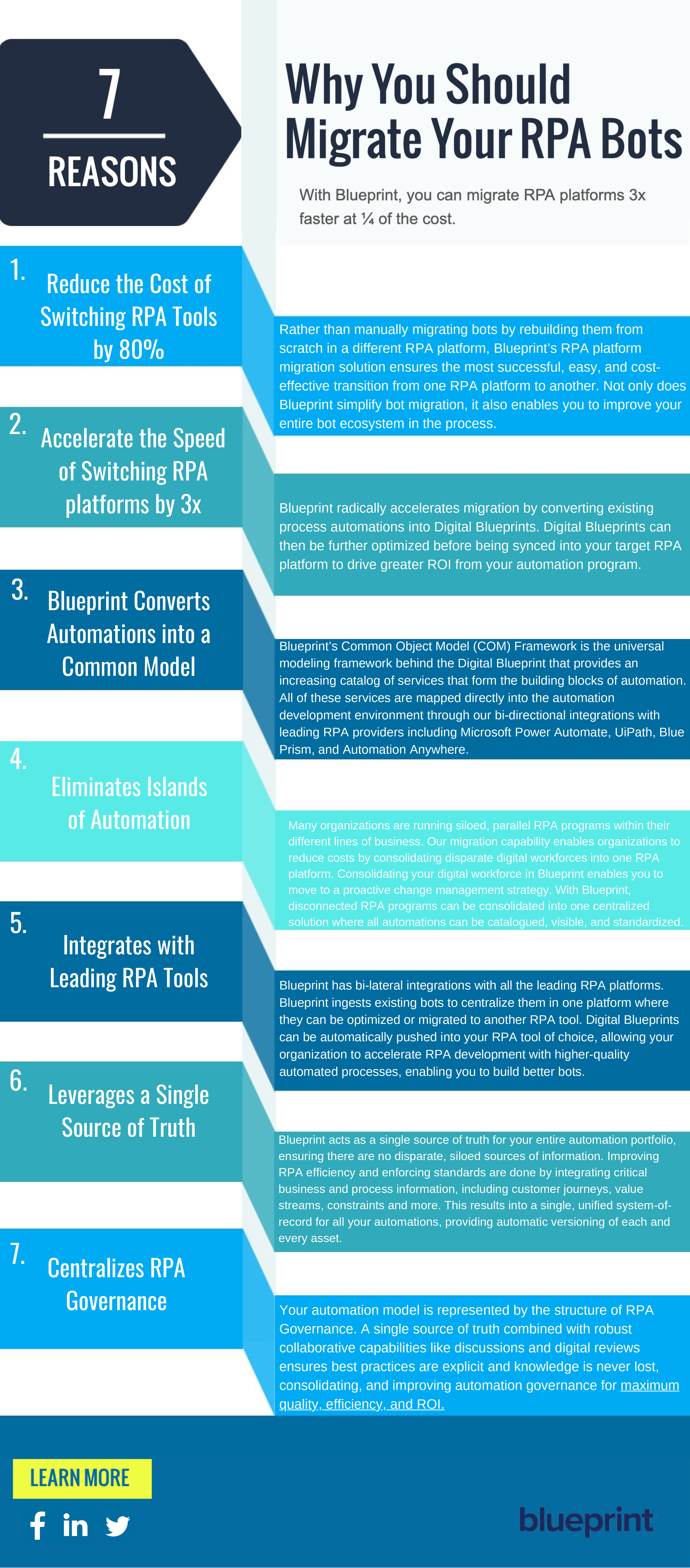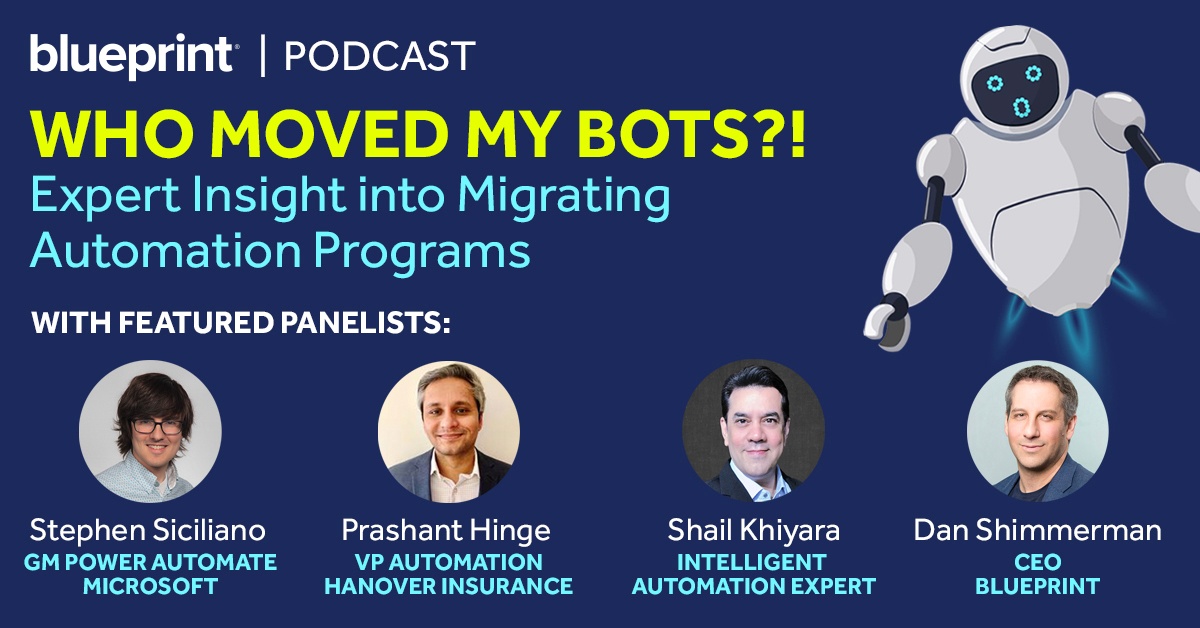INFOGRAPHIC: 7 Reasons Why You Should Migrate RPA Platforms with Blueprint
-
Reduce the Cost of Switching RPA Tools by 80%
Rather than manually migrating bots by rebuilding them from scratch in a different RPA platform, Blueprint’s RPA platform migration solution ensures the most successful, easy, and cost-effective transition from one RPA platform to another. Not only does Blueprint simplify bot migration, it also enables you to improve your entire bot ecosystem in the process.
-
Accelerate the Speed of Switching RPA platforms by 3x
Blueprint radically accelerates migration by converting existing process automations into Digital Blueprints. Digital Blueprints can then be further optimized before being synced into your target RPA platform to drive greater ROI from your automation program.
-
Blueprint Converts Automations into a Common Model
Blueprint’s Common Object Model (COM) Framework is the universal modeling framework behind the Digital Blueprint that provides an increasing catalog of services that form the building blocks of automation. All of these services are mapped directly into the automation development environment through our bi-directional integrations with leading RPA providers including Microsoft Power Automate, UiPath, Blue Prism, and Automation Anywhere.
-
Eliminate Islands of Automation
Many organizations are running siloed, parallel RPA programs within their different lines of business. Our migration capability enables organizations to reduce costs by consolidating disparate digital workforces into one RPA platform. Consolidating your digital workforce in Blueprint enables you to move to a proactive change management strategy. With Blueprint, disconnected RPA programs can be consolidated into one centralized solution where all automations can be catalogued, visible, and standardized.
Learn more: How an RPA Center of Excellence (CoE) Eliminates Islands of Automation
-
Integrates With Leading RPA Tools
Blueprint has bi-lateral integrations with all the leading RPA platforms. Blueprint ingests existing bots to centralize them in one platform where they can be optimized or migrated to another RPA tool. Digital Blueprints can be automatically pushed into your RPA tool of choice, allowing your organization to accelerate RPA development with higher-quality automated processes, enabling you to build better bots.
-
Leverages a Single Source of Truth
Blueprint acts as a single source of truth for your entire automation portfolio, ensuring there are no disparate, siloed sources of information. Improving RPA efficiency and enforcing standards are done by integrating critical business and process information, including customer journeys, value streams, constraints and more. This results in a single, unified system-of-record for all your automations, providing automatic versioning of each and every asset.
-
Centralizes RPA Governance
Your automation model is represented by the structure of RPA Governance. A single source of truth combined with robust collaborative capabilities like discussions and digital reviews ensures best practices are explicit and knowledge is never lost, consolidating, and improving automation governance for maximum quality, efficiency, and ROI.
Listen to our recent podcast where a live panel of automation experts discussed:
-
What’s triggering RPA migrations into other platforms
-
The benefits and costs of moving your RPA portfolio into another vendor
-
How to measure the success of an RPA migration
-
Best practices for anyone looking to migrate RPA vendors in the next 6-12 months
Listen in and discover expert insights into the future of the RPA market and how migrating automation programs can enable scale.
Share this
Recent Stories
Part 3 - How to Successfully Switch to Microsoft Power Automate Faster and at a Fraction of the Cost with Blueprint


Part 3 - How to Successfully Switch to Microsoft Power Automate Faster and at a Fraction of the Cost with Blueprint
Oct 28, 2021 10:00:00 AM
2
min read
5 Takeaways From Our Recent RPA Migration Panel: Who Moved My Bots?


5 Takeaways From Our Recent RPA Migration Panel: Who Moved My Bots?
Dec 21, 2021 9:30:00 AM
5
min read
Blueprint Launches Solution for RPA Platform Migration, Ending RPA Vendor Lock-In


Blueprint Launches Solution for RPA Platform Migration, Ending RPA Vendor Lock-In
Jan 13, 2021 2:41:27 PM
2
min read



